第3章 INTRODUCTION(3)
To Burke's attack on the French Revolution Mary Wollstonecraft wrote an Answer--one of many answers provoked by it--that attracted much attention.This was followed by her "Vindication of the Rights of Woman while the air was full of declamation on the "Rights of Man."The claims made in this little book were in advance of the opinion of that day,but they are claims that have in our day been conceded.
They are certainly not revolutionary in the opinion of the world that has become a hundred years older since the book was written.
At this the Mary Wollstonecraft had moved to rooms in Store Street,Bedford Square.She was fascinated by Fuseli the painter,and he was a married man.She felt herself to be too strongly drawn towards him,and she went to Paris at the close of the year 1792,to break the spell.She felt lonely and sad,and was not the happier for being in a mansion lent to her,from which the owner was away,and in which she lived surrounded by his servants.Strong womanly instincts were astir within her,and they were not all wise folk who had been drawn around her by her generous enthusiasm for the new hopes of the world,that made it then,as Wordsworth felt,a very heaven to the young.
Four months after she had gone to Paris,Mary Wollstonecraft met at the house of a merchant,with whose wife she had become intimate,an American named Gilbert Imlay.He won her affections.That was in April,1793.He had no means,and she had home embarrassments,for which she was unwilling that he should become in any way responsible.A part of the new dream in some minds then was of a love too pure to need or bear the bondage of authority.The mere forced union of marriage ties implied,it was said,a distrust of fidelity.When Gilbert Imlay would have married Mary Wollstonecraft,she herself refused to bind him;she would keep him legally exempt from her responsibilities towards the father,sisters,brothers,whom she was supporting.She took his name and called herself his wife,when the French Convention,indignant at the conduct of the British Government,issue a decree from the effects of which she would escape as the wife of a citizen of the United States.But she did not marry.She witnessed many of the horrors that came of the loosened passions of an untaught populace.
A child was born to her--a girl whom she named after the dead friend of her own girlhood.And then she found that she had leant upon a reed.She was neglected;and was at last forsaken.Having sent her to London,Imlay there visited her,to explain himself away.She resolved on suicide,and in dissuading her from that he gave her hope again.He needed somebody who had good judgment,and who cared for his interests,to represent him in some business affairs in Norway.She undertook to act for him,and set out on the voyage only a week after she had determined to destroy herself.
The interest of this book which describes her travel is quickened by a knowledge of the heart-sorrow that underlies it all.Gilbert Imlay had promised to meet her upon her return,and go with her to Switzerland.But the letters she had from him in Sweden and Norway were cold,and she came back to find that she was wholly forsaken for an actress from a strolling company of players.Then she went up the river to drown herself.She paced the road at Putney on an October night,in 1795,in heavy rain,until her clothes were drenched,that she might sink more surely,and then threw herself from the top of Putney Bridge.
She was rescued,and lived on with deadened spirit.In 1796these "Letters from Sweden and Norway"were published.Early in 1797she was married to William Godwin.On the 10th of September in the same year,at the age of thirty-eight,Mary Wollstonecraft Godwin died,after the birth of the daughter who lived to become the wife of Shelley.The mother also would have lived,if a womanly feeling,in itself to be respected,had not led her also to unwise departure from the customs of the world.Peace be to her memory.None but kind thoughts can dwell upon the life of this too faithful disciple of Rousseau.
H.M.